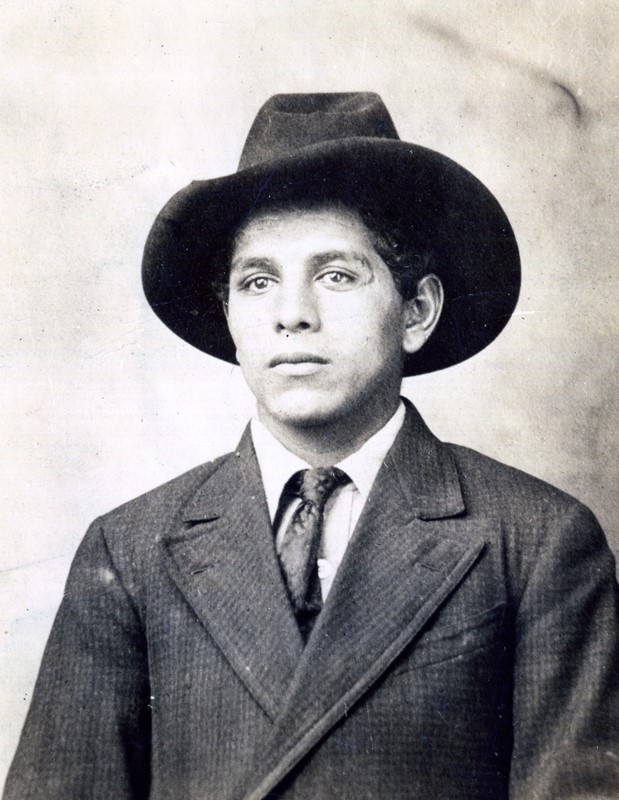
Latino History in Oklahoma
Activities
Compare and Contrast: Exploring Culture
Culture is the people around you, the objects you use, and how you use your time. Culture shapes how you think and is a big part of what makes you…YOU! People come from many different cultures. Other people may think some things are important that you don’t, they may express themselves very differently than you, or they may use objects you are not familiar with. At other times, a person’s culture may be very similar to your own. That culture will seem very comfortable to move around in and familiar. A great way to learn about different cultures is to explore a culture’s food and dance. Visit Calles Dos Cinco: Historic Capitol Hill’s YouTube channel and watch at least two of the country features. As you do, think about these questions:
- Were the dances very different or similar?
- Were the dances very difficult or simple? You should try to learn them!
- What ingredients were the same between cultures?
- What ingredients were different between cultures?
- Find the countries you learned about on a map. Does their location explain why they would use certain ingredients?
Historic Capitol Hill’s channel: https://www.youtube.com/channel/UCA6tJkmizkSiaV4WKgkoLbw
Conducting Research: Country Profile
You can extend your learning by taking the countries you learned about and creating a country profile. Fill this out to keep track of your answers.
Name of Country:
Area:
Population:
What continent is the country on?
What is the capital of the country?
What kind of government does this country have?
What countries does this country border or touch?
What kind of climate does the country have?
Does it have any major mountains, rivers, deserts, or other physical features? What are they?
What are the major languages in this country?
What are the major religions in this country?
What are popular foods in this country?
What are the major economic activities in this country?
What is an environmental challenge they face?
Sketch the country, marking the location and name of its capital:
Analysis: Identifying important information
One of most important skills for a historian is understanding main ideas and supporting details. When a creator makes a story, they want the person who is seeing, reading, or hearing it to learn something specific. The most important message in a story is the main idea. In order to understand the main idea well, the creator of the story will add details to make the story interesting, or relatable, or to add context. It can be hard to figure out the main idea and the supporting details but, with practice, it gets easier! Try this activity to practice your skills at identifying the main idea and supporting details.
Pick a section in this e-exhibit and read it. Ask yourself, “What is the most important message in this section?” Write that down in the first box. In the other boxes, write down details from that section. A detail is a piece of information that helps explain the main idea.
If you had to tell someone what this story is about in one sentence, what would you tell them? This is the main idea!

Supporting detail

Supporting detail
 l
l
Supporting detail

Supporting detail

Evidence Scavenger Hunt: Developing a Narrative
“Doing” history is like being a detective. Historians look for pieces of evidence to put together so they can understand what happened. Then, they take that evidence and build a narrative or a story that explains what the evidence shows. Below are several newspaper articles about what happened to a man named Rufino Rodrigues.* See if you can find pieces of evidence about what happened. Then, create a story, using the evidence you found, about Rufino Rodrigues.
*Rufino Rodrigues’s name is not spelled correctly in these newspaper articles. Mistakes like that can happen but don’t let it throw you off the trail!
Newspaper Articles
Sapulpa Evening Democrat (Sapulpa, Okla.), Vol. 1, No. 122, Ed. 1 Saturday, February 24, 1912
https://gateway.okhistory.org/ark:/67531/metadc1469503/
The Guthrie Daily Star (Guthrie, Okla.), Vol. 8, No. 301, Ed. 1 Sat-urday, February 24, 1912
https://gateway.okhistory.org/ark:/67531/metadc275103/
Tulsa Daily World (Tulsa, Okla.), Vol. 7, No. 137, Ed. 1 Saturday, February 24, 1912
https://gateway.okhistory.org/ark:/67531/metadc133547/
The Oklahoma Labor Unit (Oklahoma City, Okla.), Vol. 3, No. 39, Ed. 1 Saturday, March 2, 1912
https://gateway.okhistory.org/ark:/67531/metadc107068/
The Coalgate Record-Register (Coalgate, Okla.), Vol. 22, No. 5, Ed. 1 Thursday, May 21, 1914
https://gateway.okhistory.org/ark:/67531/metadc1715807/
Wagoner County Record (Wagoner, Okla.), Vol. 22, No. 40, Ed. 1 Thursday, May 28, 1914
https://gateway.okhistory.org/ark:/67531/metadc1721400/

Rufino Rodrigues (18032, Frederick S. Barde Collection, OHS).

